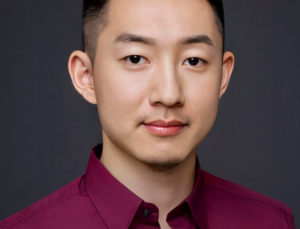The hype, I’m afraid, will not go away anytime soon. Take these three headlines from my newsfeed in the past 24 hours for instance: AI Assistant to Teach Students in Coding Course at Harvard Starting This Fall; UK’s Top Universities Issue 5 Guidelines for Generative AI; AI May Harm More Than Help B-School Students, Study Shows.
The truth, at least according to Ren Wang, co-founder and Chief Operating Officer of HiLink, is more mundane. This April, Hilink released an AI lesson planner powered by ChatGPT that they say “revolutionizes the planning process by enabling educators to quickly create comprehensive lesson plans with just a few steps, such as inputting topic, audience, and keywords.”
But how does that work exactly? I asked Ren this and a few other questions about how he sees AI tech affecting the way we teach and learn. Have a listen and scroll down for some edited excerpts.

On what problems AI can solve:
One of the biggest time investments for teachers is really figuring out how they are going to structure their lessons. What topics are they going teach coming up with what content? And that’s a massive problem, both in terms of the time investment as well as materials for their classes. And with AI we can not only help them take less time to plan lessons, but also give them content that’s generated by AI to use directly in classes so that they can actually concentrate more on the most valuable parts of their teaching and connecting with the students.
On fears such as AI hallucinations:
I find that phrase very interesting because we’re starting to personify the AI, we’re starting to think of it as something that’s a little bit more human. So we use these terms like hallucinations, and I think that partially adds to some of the fear around it. But really it’s a reflection of the novelty of the technology. We’re still in very early days. I don’t think it’s going anywhere, but I also think that it needs a lot of improvement to become more accurate and more helpful. But here is why we still need people, why we still need teachers, and why this is not going to replace anything that we’re doing.
On where he sees AI in the near future:
I think in two, three years technologies like we have at HiLink will be able to help teachers do a lot of their prep work, really amplify their voice, amplify the things they do well in the classroom, such as coaching and development, and give more individual personalized attention to their students.
You can even imagine situations where students are participating from completely different backgrounds, maybe even speaking different languages, maybe even slightly different levels and understanding of the material. They can all have the same teacher. The AI will help bridge the gap between their specific needs. And these things will just be a part of the interface that they use. It will become just a very comfortable kind of contextual environment for them.
Where we really want to be is that we’ve done such a good job—that it’s making students love the learning process more, and it’s making teachers love the teaching process more. We see a big problem right now with teacher burnout. I think some of these technologies can really help people love those types of educational processes.

